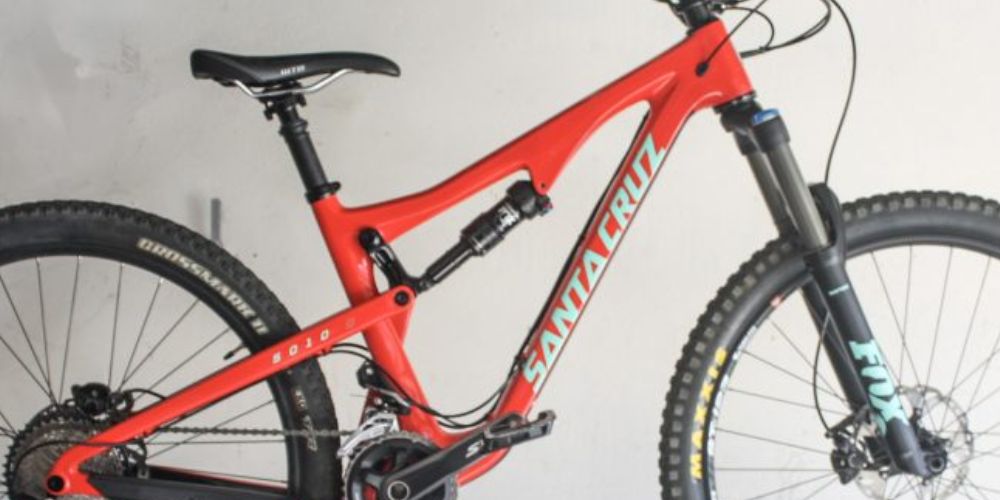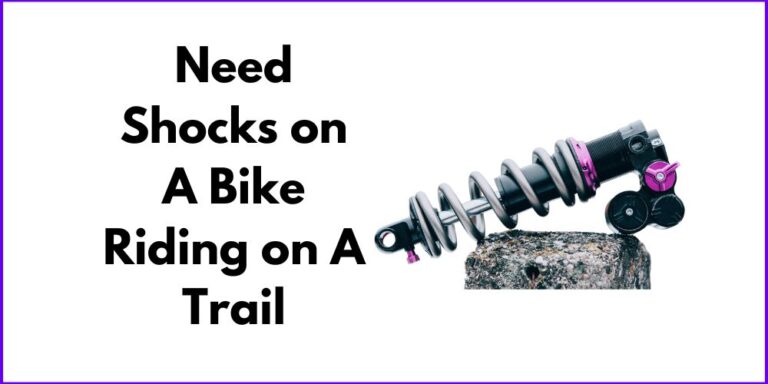The Great Divide Mountain Bike Trail is a renowned 2,700-mile route that challenges riders from Canada to Mexico. As mountain bikers prepare for this epic journey, the question arises: are shocks necessary on the Great Divide Trail? This blog post explores the importance of shocks in mountain biking and examines whether they are essential for conquering this demanding trail. Let’s delve into the need for shocks on the Great Divide Mountain Bike Trail and uncover the truth.
Are Shocks Needed on The Great Divide Mountain Bike Trail?

While it is technically possible to ride the Great Divide Mountain Bike Trail without shocks, equipping your bike with suspension significantly enhances the overall experience. The trail features rough sections and extended washboard segments that can be quite challenging without shocks.
Riding with a front shock absorbs impacts, improves control, and provides a smoother and more enjoyable ride. While experienced riders can manage without shocks, using suspension maximizes comfort and allows you to fully appreciate the trail’s breathtaking landscapes. Ultimately, while the choice is yours, having shocks on the Great Divide Trail greatly enhances the adventure.
Pros of Using Shocks on the Great Divide Mountain Bike Trail
- Enhanced ability to handle rough terrain and obstacles: The Great Divide Trail is known for its challenging terrain, including rocky sections, root-filled paths, and uneven surfaces. Shocks provide a cushioning effect, allowing your bike to smoothly navigate these obstacles. The suspension absorbs impacts, reducing the jolts and vibrations that would otherwise be transmitted to your body, improving overall control and minimizing the risk of accidents.
- Improved traction and stability on uneven surfaces: With shocks, your bike maintains better contact with the ground, enhancing traction and stability. This is particularly beneficial when riding on loose gravel, mud, or slippery surfaces. The suspension system helps to keep your tires in contact with the trail, improving your ability to maneuver and reducing the likelihood of skidding or losing control.
- Reduced strain on the body, leading to increased endurance: Riding the Great Divide Trail can be physically demanding, with long hours in the saddle and constant exposure to rough terrain. Shocks absorb the impacts and vibrations, reducing the strain on your body. By minimizing the stress on your arms, wrists, and lower back, shocks can help prevent fatigue and allow you to ride for longer periods, increasing your overall endurance on the trail.
Cons of Using Shocks on the Great Divide Mountain Bike Trail
- Additional weight and potential impact on speed: Shocks add weight to your bike, which can affect your speed and acceleration, especially during uphill climbs. The added suspension components and mechanisms increase the overall bike weight, requiring more effort to pedal. However, modern suspension technologies have significantly reduced the weight of shocks, mitigating this drawback to some extent.
- Maintenance and cost considerations associated with shocks: Shocks require regular maintenance to ensure optimal performance. Seals, bushings, and other components may need to be replaced periodically, and adjustments might be necessary based on trail conditions. Additionally, quality suspension systems can be expensive, especially for full suspension bikes. However, considering the benefits they provide, the investment can be worthwhile for those who frequently tackle challenging trails like the Great Divide.
- Personal preferences and riding style as factors to consider: The choice to use shocks on the Great Divide Trail ultimately depends on your personal preferences and riding style. Some riders enjoy the added comfort and control that shocks offer, while others prefer the simplicity and lightweight nature of rigid bikes. It’s essential to consider your own comfort level, skill set, and the type of riding experience you seek when deciding whether to use shocks on this demanding trail.
However, using shocks on the Great Divide Mountain Bike Trail offers several advantages. They enhance your ability to handle rough terrain and obstacles, improve traction and stability on uneven surfaces, and reduce strain on your body, ultimately increasing your endurance.
Overall, it’s important to consider the potential drawbacks, such as additional weight, maintenance requirements, and personal preferences. Ultimately, the decision to use shocks on the Great Divide Trail should be based on your specific needs, riding style, and the level of comfort and control you desire.
Expert Opinions and Experiences
Interviews with experienced mountain bikers who have conquered the Great Divide Trail reveal varied perspectives on the necessity of shocks.
While some emphasize the benefits of enhanced control and comfort, others argue for the rewarding challenge of riding without suspension. Individual experiences further shape these opinions.
Ultimately, the decision to use shocks on the trail depends on personal preferences and goals. Whether you choose suspension or a rigid setup, the Great Divide Trail promises an extraordinary adventure that pushes your limits and creates lasting memories.
FAQs: Exploring the Great Divide Mountain Bike Trail
When should I ride the Great Divide mountain bike route?
The Great Divide route is generally passable from late June to mid-October, but keep in mind that snow can occur at higher elevations at any time of the year. After thorough research, we recommend a mid-August departure date for a close-to-ideal riding experience.
Can you mountain bike the Continental Divide Trail?
Yes, the Continental Divide Trail (CDT) offers one of the most challenging and rewarding mountain biking experiences globally. With its rugged terrain, unpredictable weather, and breathtaking scenery, the CDT guarantees an unforgettable adventure for all riders.
Can you ride the GDMBR on a gravel bike?
The choice of bike for the Great Divide Mountain Bike Route (GDMBR) can vary based on personal experience and preference. You can successfully complete this route on a fully rigid gravel bike, a full suspension mountain bike, or a hybrid combination of the two. It ultimately depends on what you have available and what suits your riding style.
How long does it take to bike the Great Divide Trail?
The duration to ride the entire Great Divide Trail can range from six to ten weeks. However, it’s important to note that logistical challenges exist. Certain sections of the route may have limited access to food and water sources, which could be more than 100 miles (160 km) apart. Proper planning and preparation are essential for a successful journey along the GDMBR.
Final Thoughts
All in all, the necessity of shocks on the Great Divide Mountain Bike Trail is a matter of personal preference. While shocks can greatly enhance the riding experience by improving control and comfort, some riders thrive on the challenge of riding without them.
It is important for readers to assess their own needs, riding style, and desired comfort levels when deciding whether to use shocks on the trail. Regardless of the choice, the Great Divide Trail promises an unforgettable adventure filled with stunning landscapes and thrilling challenges.







